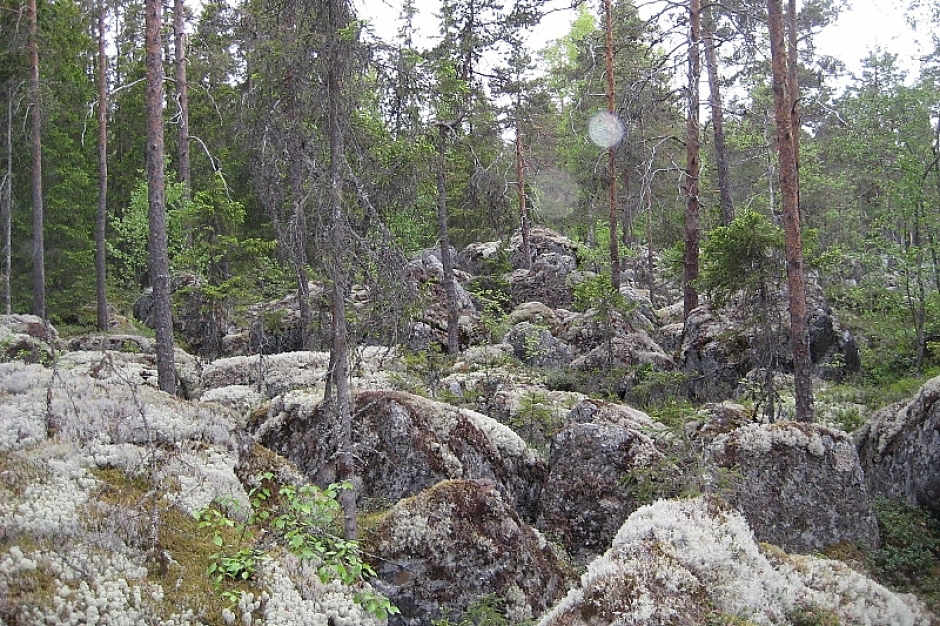Boulder fields and rocks

The terrain in Vaasa and the Kvarken region is generally rocky. In certain places, rocks completely dominate the landscape, obstructing trees and other plant life from rooting. Accumulations of boulders are called block-fields, while smaller stones form rubble stone fields. Both of these types of stone fields have been formed by sea water washing away finer materials while the sea level was higher. Stone rubble fields are sometimes referred to as “devil’s fields” since it was previously believed that the devil himself had gathered stones for his farmlands. Areas with exposed bedrock also occur in the Vaasa-landscape, particularly in the highest points in the terrain. Vegetation in rocky areas is similar to that found in dry or arid heathland forests and the most prevalent tree species is slow growing pine. Where water gathers in dells you find moisture-loving plant species such as wild rosemary and hare’s-tail cottongrass. Avifauna is dependent on surrounding forests and typical bird species include the willow warbler, Eurasian siskin and chaffinch. Eurasian eagle-owl and common raven can be found nesting along slopes and steep block-fields.
The vegetation in stone fields and rocky terrain often deviates from surrounding vegetation as drought combined with sparse nutrition forms a unique habitat. Such areas have remained unattractive for traditional forestry, which means that the tree population varies in age and dead trees remain where they fall, all of which contributes to increased biodiversity. Boulder- and block fields, as well as exposed bedrock areas, are deemed important habitats in the Forest act and as such should be excluded from forestry activities.
Rocky areas are most prevalent in Gerby and Öjberget in Sundom. Boulder- and block fields are common around Öjberget as well as in Öjen and the area surrounding the Pilvilampi lake. The optimal time of year for excursions to these areas is during the snow free seasons.

